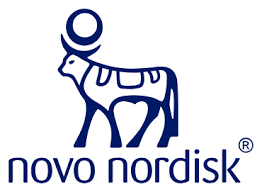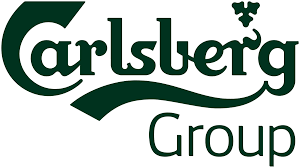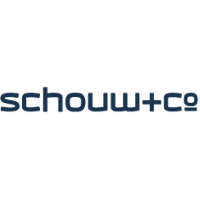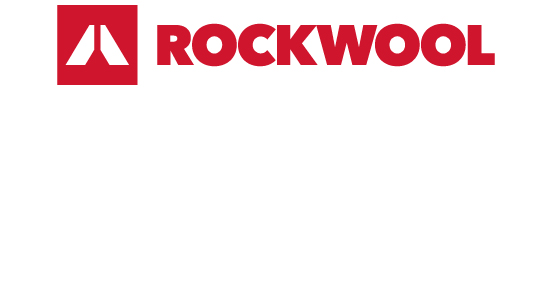In 2023, Denmark's largest companies continued to play a key role in global trade, healthcare, logistics, and energy. This list presents the top 10 firms by revenue, reflecting both the country’s economic strengths and shifting global trends. While some saw declining sales after record highs in previous years, others achieved strong growth through innovation and expanding international demand.
Top 10 Companies in Denmark by Sales in 2023
Do you need up-to-date information for 2023?
Top 100 companies
Download list for €79Top 1000 companies
Download list for €590Download full 800 thousand Denmark companies
Request a quoteCompany
Location
Website
Age of business
Revenue
Location
SIC
Industry
Headquarters
Employees
VAT
Address
NAICS
Top 10 Companies in Denmark by Sales in 2023
1. Maersk (A.P. Møller – Mærsk A/S) – $51.1B

In 2023, A.P. Moller – Maersk A/S reported a revenue of $51.1 billion, a significant decline from $81.5 billion in 2022. This downturn was primarily attributed to reduced freight rates and lower container volumes, particularly in its Ocean segment. The company achieved an underlying EBITDA of $9.8 billion, aligning with its financial guidance for the year. Net profit for 2023 stood at $3.9 billion, a substantial decrease from $29.3 billion in the previous year. Despite these challenges, Maersk maintained a strong cash flow, reporting $3.9 billion in free cash flow. The company also proposed a dividend of DKK 515 per share, reflecting 30% of its underlying net results. In response to the market conditions, Maersk announced plans to reduce its workforce by 10,000 employees, aiming to achieve cost savings of $600 million in 2024.
2. Novo Nordisk – $33.7B

In 2023, Novo Nordisk reported a revenue of $33.7 billion, marking a 36% increase at constant exchange rates compared to the previous year. This growth was primarily driven by the strong performance of its GLP-1-based therapies, Ozempic and Wegovy, which are used for diabetes and obesity treatment, respectively. Sales of these products surged, with Wegovy experiencing a 147% increase in sales, while Ozempic's sales grew by 26% .
The company's operating profit for 2023 was 102.6 billion Danish kroner, reflecting a 37% increase from the previous year. Net profit also saw a significant rise, reaching 83.7 billion Danish kroner, up from 55.5 billion in 2022 .
Novo Nordisk's workforce expanded to approximately 77,349 employees by the end of 2023, up from 63,370 in 2022 . The company operates in over 80 countries and has a strong presence in research and development, with facilities in five countries, and production facilities in 13 countries
3. DSV A/S – $22.6B

In 2023, DSV A/S, a leading Danish transport and logistics company, reported revenues of DKK 150.8 billion (approximately $22.6 billion), a significant decline from DKK 235.7 billion in 2022. This decrease was primarily due to lower freight volumes and reduced prices in the global shipping sector, reflecting a general softening in demand and normalizing freight markets .
Operating profit (EBIT) before special items for 2023 was DKK 17.7 billion, down from DKK 25.2 billion in the previous year. Net income also decreased to DKK 12.3 billion from DKK 17.6 billion in 2022 . Despite these challenges, DSV maintained a solid operating margin of 11.8% and a profit margin of 7.1%.
The company employed approximately 76,000 people globally as of the end of 2022 . In September 2024, DSV announced plans to acquire Schenker, the logistics arm of Deutsche Bahn, for €14.3 billion ($15.9 billion). This acquisition, expected to close in the second quarter of 2025, will position DSV as the world's largest logistics company by revenue and volume, surpassing competitors like DHL Logistics and Kuehne + Nagel
4. Vestas Wind Systems – $16.5B

In 2023, Vestas Wind Systems A/S reported a revenue of €15.38 billion (approximately $16.5 billion), marking a 6.2% increase from €14.49 billion in 2022. This growth was driven by higher pricing and continued expansion in its service segment. The company achieved a positive EBIT margin before special items of 1.5%, a significant improvement from a loss of 8.0% in the previous year. Net profit for 2023 stood at €78 million, a turnaround from a net loss of €1.57 billion in 2022.
Vestas' order intake reached a record 18.4 gigawatts (GW) in 2023, with a combined order backlog of €60.1 billion across its Power Solutions and Service segments. The company produced and shipped 11.7 GW of wind turbines during the year. The service segment continued to be a significant contributor, generating €3.57 billion in revenue, up 13% from the previous year.
As of the end of 2023, Vestas employed approximately 30,586 people, reflecting a 7.6% increase from the previous year.
5. Ørsted – $11.5B

In 2023, Ørsted, Denmark's leading renewable energy company, reported a revenue of DKK 79.3 billion (approximately $11.5 billion), a decrease from DKK 81.5 billion in 2022. The company achieved an operating profit (EBITDA) of DKK 18.7 billion, surpassing its guidance of DKK 20–23 billion, excluding impacts from new partnerships and cancellation fees .
Despite these positive operational results, Ørsted faced significant challenges in 2023. The company recognized impairment losses totaling DKK 26.8 billion, primarily related to the cancellation of the Ocean Wind 1 project and other strategic adjustments . Additionally, Ørsted announced a provision of DKK 9.6 billion for cancellation fees associated with ceasing the development of Ocean Wind 1 .
In response to these challenges, Ørsted implemented a "reset plan" that included pausing dividend payments for the financial years 2023–2025, reducing its 2030 renewable energy capacity target from 50 GW to 35–38 GW, and withdrawing from markets in Spain, Portugal, and Norway. The company also announced plans to cut up to 800 jobs to streamline operations .
As of the end of 2023, Ørsted employed approximately 8,905 full-time employees . Despite the setbacks, Ørsted remains committed to its long-term vision of a world powered entirely by green energy, continuing to invest in offshore wind, energy storage, and green hydrogen projects.
6. Carlsberg Group – $9.8B

In 2023, Carlsberg Group reported a revenue of DKK 73.6 billion (approximately $9.8 billion), reflecting a 4.7% increase compared to the previous year. This growth was driven by a 9.2% rise in organic revenue per hectoliter, with all regions contributing positively. Operating profit before special items decreased by 3.2% to DKK 11.1 billion, impacted by currency fluctuations. Adjusted net profit for continuing operations was DKK 7.4 billion, a 5% decline, primarily due to higher finance costs and adverse currency movements. The company reported a net loss of DKK 40.8 billion, largely due to the deconsolidation of its Russian business, which resulted in accumulated losses on currency translation and hedges.
Carlsberg's workforce numbered approximately 34,982 employees globally in 2023. The company continued to focus on sustainability, achieving a 10% improvement in revenue per hectoliter and maintaining a strong presence in premium and alcohol-free beer segments. Despite challenges, Carlsberg's strategic initiatives and market positioning have contributed to its resilience in the competitive global beverage industry.
7. Tryg – $5.5B

In 2023, Tryg Forsikring A/S, a leading Nordic insurance company, reported a revenue of DKK 37.1 billion (approximately $5.5 billion), reflecting a 4.8% growth in local currencies. The company achieved an insurance service result of DKK 6.4 billion and a combined ratio of 82.8, indicating strong operational performance despite challenges such as high inflation and a record number of weather-related claims across its markets. Pre-tax profit stood at DKK 5.0 billion, with a net profit of DKK 3.9 billion, marking a significant improvement from the previous year. Tryg's solvency ratio was 197%, demonstrating financial resilience. The company employed approximately 6,800 people in 2023. Additionally, Tryg maintained a high customer satisfaction score of 86 and continued its commitment to sustainability and digital innovation.
8. Aktieselskabet Schouw & Co. – $5.5B

In 2023, Aktieselskabet Schouw & Co. reported a revenue of DKK 37.2 billion (approximately $5.5 billion), marking a 14% increase from DKK 32.6 billion in 2022. Net income was DKK 935 million, slightly down from DKK 960 million the previous year. The company achieved a record EBITDA of DKK 2.9 billion, up 25% year-over-year, driven by strong performances in its core businesses. Schouw & Co. employed approximately 14,623 people across its six portfolio companies .
The company's portfolio includes BioMar, a leading producer of fish feed; GPV, a provider of electronics and advanced mechanics; Fibertex Personal Care and Fibertex Nonwovens, manufacturers of nonwoven materials; HydraSpecma, specializing in hydraulic components; and Borg Automotive, an independent remanufacturer in the automotive aftermarket. These businesses operate in diverse sectors, including aquaculture, electronics, automotive, and personal care, contributing to Schouw & Co.'s resilience against market volatility
9. Rockwool – $3.92B

In 2023, Rockwool A/S, a leading global manufacturer of stone wool insulation products, reported a revenue of €3.62 billion (approximately $3.92 billion), reflecting a 4% decrease in local currencies compared to the previous year. Despite challenging market conditions, the company achieved an EBIT of €518 million, resulting in an EBIT margin of 14.3%, up from 10.3% in 2022. Net income for the year was €389 million, a significant increase from €273 million in 2022 .
As of December 31, 2023, Rockwool employed approximately 11,993 full-time equivalent employees, a slight decrease from 12,197 in 2022 .
The company operates 51 manufacturing facilities across Europe, North America, and Asia, and has a presence in over 120 countries. In 2023, Rockwool continued its commitment to sustainability by progressing towards its 2030 and 2034 goals and pledging to achieve net-zero greenhouse gas emissions by 2050 .
10. Danske Bank – $3.15B

In 2023, Danske Bank, Denmark's largest financial institution, reported a net profit of DKK 21.26 billion (approximately $3.15 billion), a significant recovery from a net loss of DKK 4.58 billion in 2022. This turnaround was driven by a 25% increase in total income, reaching DKK 56.4 billion, and a notable improvement in the cost-to-income ratio, which declined from 63.4% to 48.5%.
The bank's core banking income rose by 20%, reflecting strong customer activity and effective cost management. Net interest income surged to DKK 35 billion, up from DKK 25.1 billion in 2022, benefiting from higher interest rates and increased lending volumes. Credit quality remained robust, with loan impairments totaling DKK 262 million, indicating a stable lending portfolio.
Danske Bank employed approximately 20,021 full-time equivalent employees in 2023. The bank has been investing in digital banking services and technology to enhance customer offerings and streamline operations, aligning with its commitment to sustainability and innovation.
